This post may contain affiliate links which may generate a small commission from clicks that result in a purchase.
The grafting olive trees technique is used to join a piece of vegetative wood (i.e. the scion) from an olive cultivar we wish to propagate to a receptive rootstock. Eventually, they will form a new olive tree, sometimes we call it a hybrid tree.
The greatest benefit of olive tree grafting is cross-pollination. Some olive trees are self-pollinating or self-fruitful and can produce olives by themselves. But having a second variety of olive and cross-pollinating those two olive tree varieties, you increase the size of olive fruit and yields of olive fruits.
Overall, olive tree grafting is a great way to increase cross-pollination instead of planting several olive tree varieties around and losing the space in your garden or orchard.
In general, there are multiple ways to graft olive trees and here in this article, I will explain 4 grafting techniques in detail including photos.
- Necessary Tools
- Time to Graft Olive Trees
- Choosing Olive Tree Rootstock
- Selecting Scion Wood from Olive Tree
- 1. Whip and Tongue Grafting Olive Trees
- 2. Cleft Grafting Olive Trees
- 3. Bark Grafting Olive Trees
- 4. Approach Grafting Olive Trees
- How to Plant Olive Tree Grafts?
- Olive Tree Graft Care Tips
- Generic FAQs
- Final Thoughts
Necessary Tools
Having the right tools will make the grafting job easier and ensure greater success with your olive grafts. The goal is to make clean cuts and minimize the damage of tissue to your olive trees.
I like to use sharp pair of pruning shears to remove the scion (i.e. the olive tree branch you intend to graft).
Also, I use a razor-sharp knife that can trim the bark of the scion and rootstock.
Craft knives or cleft grafting tools or hatchets can be used as well.
To seal a graft union I use grafting tape and a grafting sealant or a plastic bag. These tools will assist in keeping the pieces together as they join in order to retain the moisture.
Time to Graft Olive Trees
Late winter into mid-spring is the best time to graft olive trees. Also, much will depend upon the type of grafting you’re doing.
For example, the cleft grafting I do early spring, though approach grafting can be done any time of the year. Just avoid the dormant season in winter, since graft union will take longer to start showing new growth.
Normally I have my olive rootstock ready and collect the olive scions before the olive growth stage and buds begin to emerge.
Choosing Olive Tree Rootstock
Today we have a wide range of rootstock choices that will produce olive trees of varying sizes, from full-size “standard” olive trees to dwarf olive trees (less than 10 feet (3 meters) tall at maturity). Different olive rootstocks vary not only in final tree size, but also in their winter hardiness, resistance to certain insects and diseases, and overall performance.
Olive rootstocks are propagated either by pit (for seedling rootstocks) or by the process of rooting olive tree cuttings.
Normally I check in local nurseries offering olive rootstocks in small quantities to home growers interested in grafting. Also, I ask my friends and neighbors for olive tree rootstocks different than I have.
Selecting Scion Wood from Olive Tree
I collect the scion wood while olive trees are still dormant (usually in late January or February in Greece). I choose straight and smooth and about pencil thickness scion wood for grafting olive trees. It should have 4 to 6 buds and be 10 to 16 inches (25 – 40 cm) long (Fig 1).
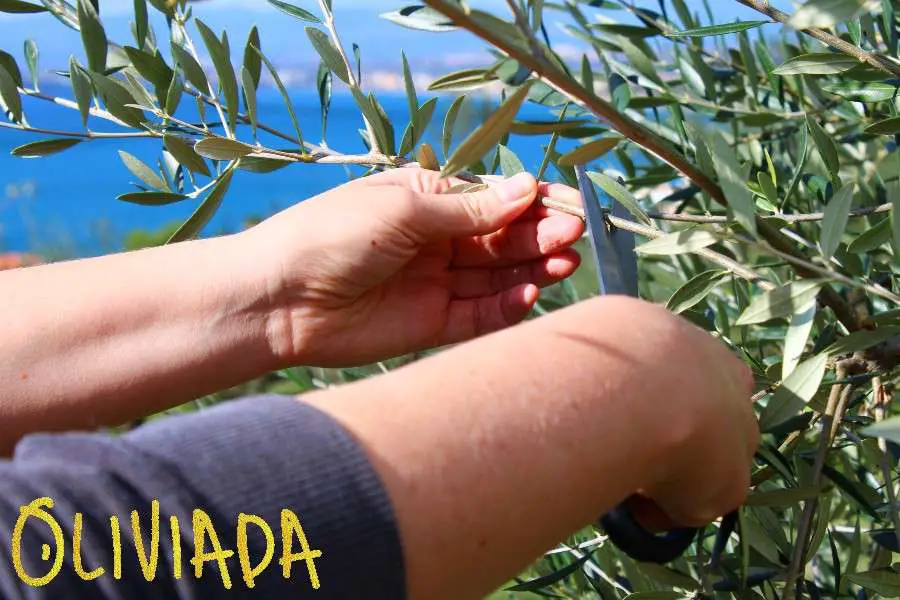
Water sprouts that grow upright in the center tops of olive trees are ideal. Though avoid collecting water sprouts that grow from the base of the olive tree.
I make clean cuts with pruning shears or sharp knife when I collect my olive scions and place them in a bucket of water to prevent them from drying out up until it is grafted.
Also, you can check several local nurseries or garden centers that sell olive scion wood. Or ask your friends and neighbors for olive tree cuttings (scions) from their trees.
My tip on choosing scion wood – don’t settle for one variety of olive trees but instead graft as many varieties as possible. Some olive trees graft easier than others so you may need to experiment with several types.
1. Whip and Tongue Grafting Olive Trees
A technique commonly used for olive tree grafting is whip and tongue grafting, also known as bench grafting. This grafting technique can be used to add multiple olive varieties to an olive tree already growing in the home orchard.
This whip and tongue grafting involve joining wood of equal or nearly equal diameter, generally about pencil thickness. So both parts the scion and the rootstock should be as close to the same diameter as possible.
Tool You May Need
I use a sharp knife or pruning shears.
To seal and wrap the grafting zone, I need a grafting tape or a plastic strip and a plastic bag.
Whip and Tongue Grafting Process
Firstly I make a smooth cut approximately 1.25 to 1.5 inches (3 to 3.8 cm) long with a single knife stroke (Fig 2). This cut is made on the olive rootstock above the root top and a matching cut is made on the bottom of scion wood you want to propagate.
The second step is a bit more difficult. I hold the rootstock and cut it down into the center of it starting at a point about 0.3 inches (0.7 cm) down from the tip of the cut surface. This cut should be nearly parallel to the grain of the olive wood (Fig 3).
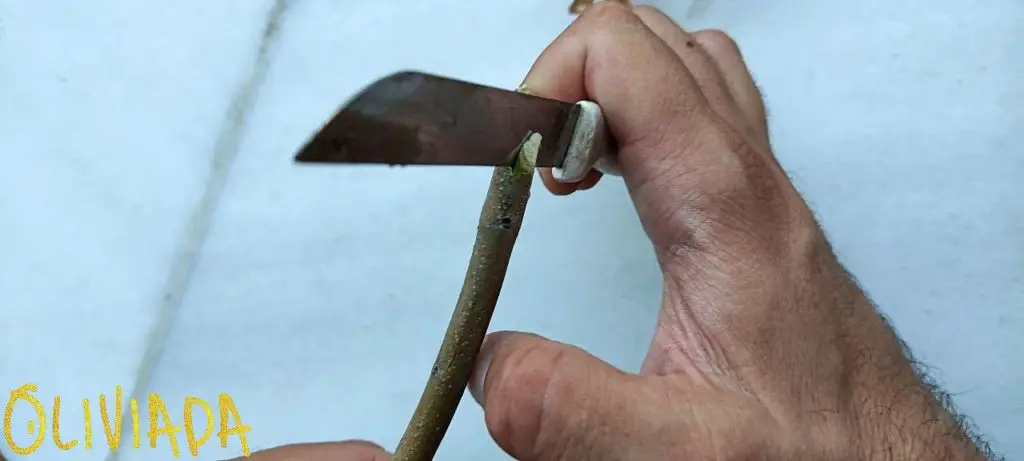
Then, I prepare the bottom of the olive scion in exactly the same fashion as the top of the olive rootstock.
Once both olive wood pieces – the scion and the rootstock – are ready, I join them by pushing them together firmly (Fig. 4). This step’s success is to ensure a comfy fit and good contact of the outer cambium layers of both parts.
You may ask what is the cambium layer?
Cambium layer – a layer of tissue just beneath the bark layer. This layer is an outer layer of the scion and rootstock where the nutrients and water are fed throughout the olive tree. This is where the actual olive tree grafting union occur. The cambium layer of each piece (i.e. scions and stock) needs to touch as closely as possible for successful grafting.
This is needed for either method of grafting (whip and tongue, approach grafting, etc) – for successful grafting to take place, the vascular cambium tissues of the olive stock and scion must be positioned in contact with each other.
Finally, I carefully wrap the new olive tree graft union to protect tissue from drying. I keep the union moist by wrapping it with grafting tape (Fig. 5) and a plastic bag (Fig. 6).
Also, you can moist the napkin, wrap the grafting place with a plastic bag and secure it not too tight because the plastic bag retains the moisture into a grafting place.
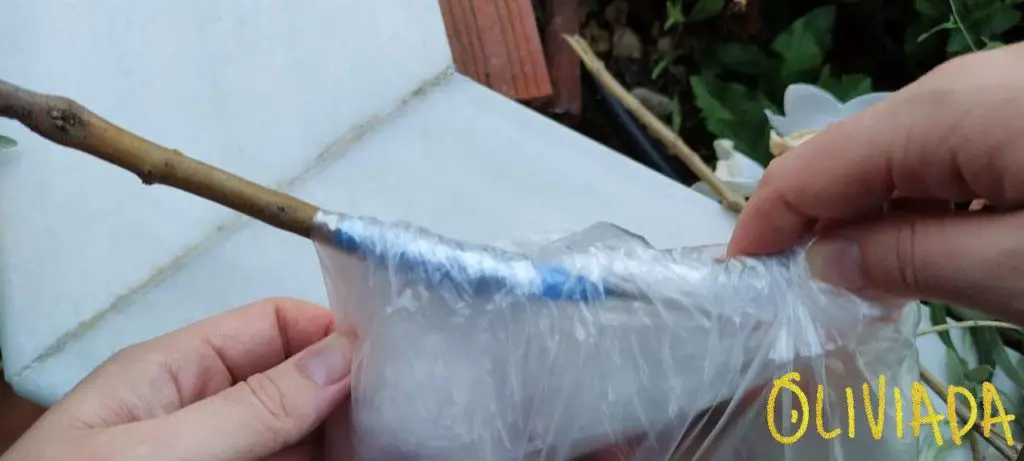
It’s good to keep the moisture up to 3 – 4 weeks. Then I can remove the plastic bag.
2. Cleft Grafting Olive Trees
Cleft grafting is one of the olive tree grafting techniques that produce a union between a large olive stock trunk or limb and a much smaller olive scion. Using this grafting method, an older olive tree can be top-worked to change to a more desirable olive variety.
Tools You May Need
I use a hammer and chisel to make a split or cleft in the olive wood.
Alternatively, you can use a hatchet and a cleft grafting tool designed for this purpose.
Olive Trees Cleft Grafting Process
For this method, I collect the olive scion wood (Ill. 1 step 1) in the same way described for the whip and tongue grafting technique for olive trees above.
The first step in cleft grafting is to prepare the older olive tree for top-working. The olive tree is cut off at a convenient height, usually 30 inches (75 cm) or so above the ground. Alternatively, individual large mature branches within an older olive tree can be top-worked using this same technique.
Carefully split the olive stock down the middle (Ill. 1 step 2). And once the olive stock is prepared, olive scions are cut and inserted to complete the graft.
So how do I prepare olive scions? I use 2 pieces of pencil-thick, year-old olive wood, approximately 5 to 6 inches (12 to 15 cm) long. I make a wedge with the olive scion that has a single, smooth, sloped cut on each side and ideally is equal in length to the depth of the wedge I cut in the olive stock. (Fig. 7).
I carefully insert the scion wedges into the split of the cleft on the stock, one on each side (Ill. 1 step 3). The goal is to ensure the outer cambium layers touch as much as possible, the entire process depends on good contact between the olive scion and rootstock.
So don’t rush with this step and continue to carve the olive scion end and inspect it until a clean and solid match is made.
After I place the olive scions inside the rootstock, I tie the rootstock with rope (Ill. 1 step 4) and must cover all cut surfaces to prevent from drying of sensitive cambium tissue.
To protect cut parts from cracks, sun damage, insects, and rodents I use wood glue or organic paints, or even mud (Ill. 1 step 5). The goal is to seal all the cracks and exposed surfaces. I use a painting brush to seal not only pruned surface but the grafted unit as well to make sure no pest gets behind it or into it up until it is going to heal.
Also, I check any newly made grafts after several days to make sure no holes in the grafting zone have opened.
3. Bark Grafting Olive Trees
If I have a larger olive rootstock in diameter than the scions, and I don’t want to split the rootstock down the middle, I choose using a technique called bark grafting or inlay grafting.
Firstly I carefully make a horizontal slit several inches long in the olive rootstock (just to go through the cambium layer).
Then I prepare 4 olive scions in the same way described above in the olive trees cleft grafting process (Fig. 7).
After loosening the bark on each side of the olive rootstock I make a spot to insert the scions. I carefully inserting the scions into the slits I made just behind the bark, the cambium layer, one on each side of the olive rootstock.
Once I am happy with these 4 pieces’ placement into the olive rootstock, I use the grafting tape or masking tape to tie and strengthen the union.
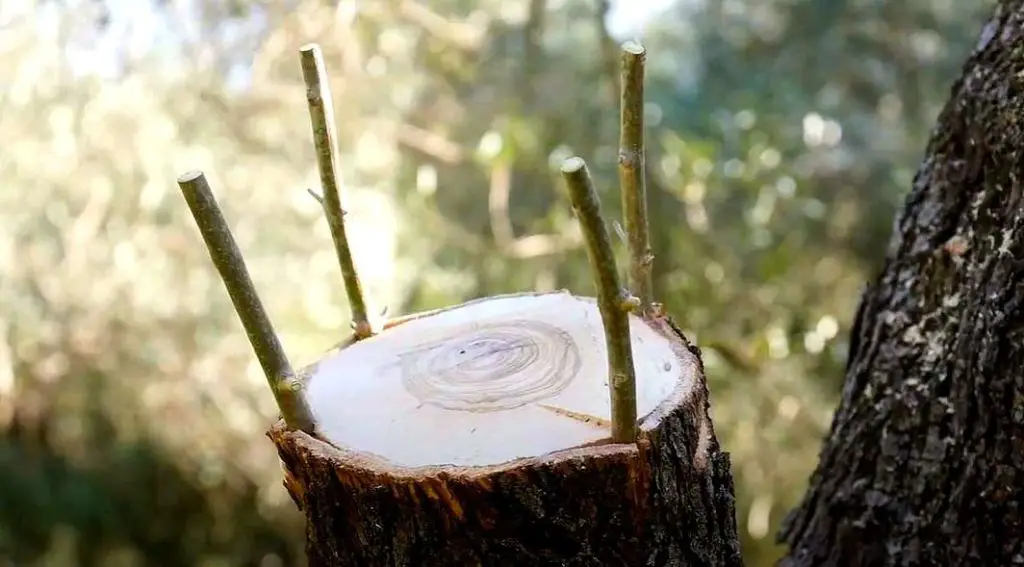
Also, you can apply a thin layer of grafting sealant to cover the union. Most important is to ensure a good bond.
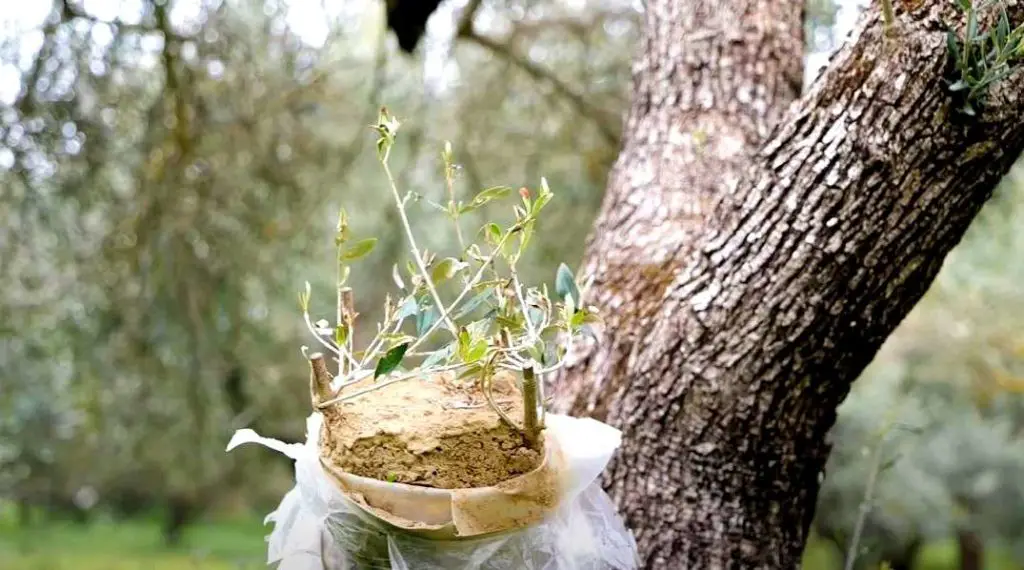
4. Approach Grafting Olive Trees
The approach grafting method for olive trees is a bit different from the others explained above. The unique feature of approach grafting for olive trees is that two independently growing, self-sustaining olive trees are grafted together. The main difference is to keep the scion on the parent olive tree and not to cut until after the graft has been completed (Ill. 2).
This self-sufficient grafting approach ensures the survival of both olive trees even if the grafting attempt is, for some reason, not successful. However, the odds of being successful are greatly bigger because of the active growing condition of both olive trees involved. And there is no time limit required for the healing of the graft union to occur before the dependent olive scion (top portion) dies from lack of nutrition.
So easier if you grow both olive trees in pots in order to be able to move pots and prepare a graft.
Here I will describe 3 methods of approach grafting for olive trees.
Spliced Approach Graft
After trying many different olive tree grafting methods, I firmly say this is the simplest graft to make.
This grafting method to work you need the same diameters olive branches.
All I need to do is to slice into the bark and wood of the rootstock branch with your knife, making a smooth wound a couple of inches long.
Then bring another olive tree (easier if it is potted) and make a matching cut on the scion which is not cut off (Fig. 11).
Gather these 2 cuts into contact and bind them very tightly together (Fig. 12), then cover the whole area with grafting tape or wax (Fig. 13).
Also, I can moist the napkin, wrap the grafting place with a plastic bag and secure it not too tight because the plastic bag retains the moisture into a grafting place.
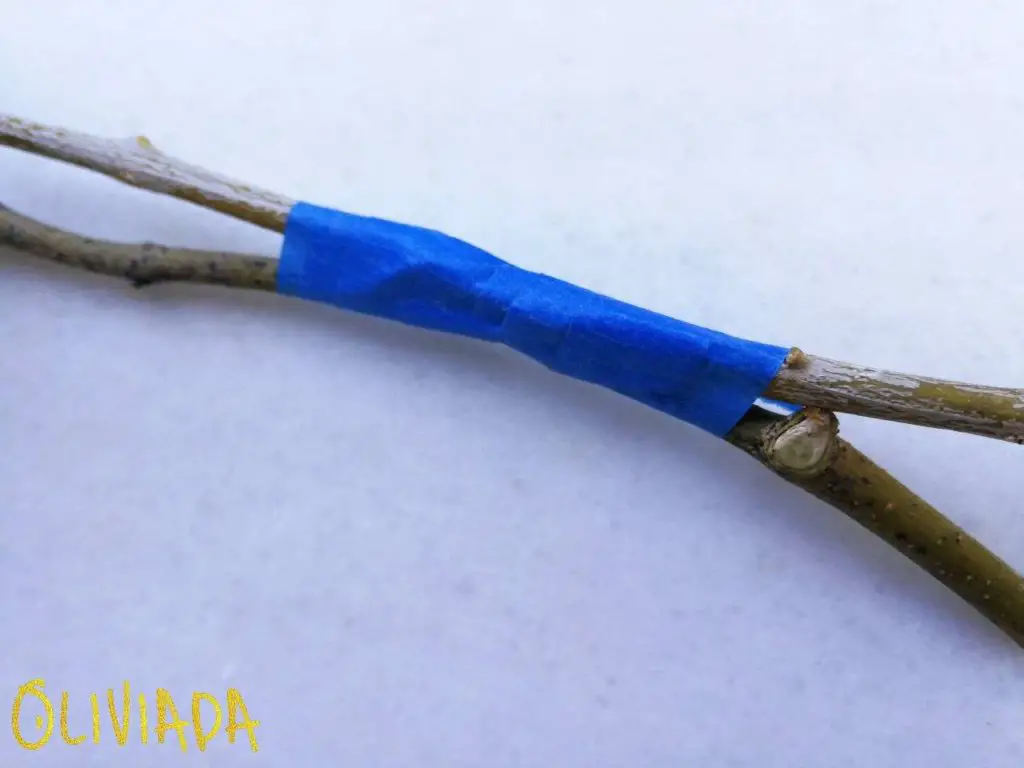
It’s good to keep the moisture up to 3 – 4 weeks. Then to remove it.
These 2 olive tree branches will heal next 3 weeks and I should be able to separate the plants in 6 – 8 weeks by cutting off the scion below the grafted union area.
Tongue Approach Graft
This is much more complex than the spliced approach grafting and somewhat similar to a whip and tongue described earlier in this article.
Initially, I make the cuts for a spliced approach graft in my olive rootstock and scion as described above.
Then, just as I would make the tongue of a whip and tongue grafting method, I slice upwards and into the wound of the scion, and downwards and into the wound on the rootstock (Fig. 14).
I now have two interlocking, springy tongues that can be joined tightly (Fig. 15), bound, and waxed.
Inlay Approach Graft
Inlay approach graft works for different size branches.
If I want to join a much smaller olive tree to a branch with comparatively thick bark, the inlay approach is an option.
In this graft, I cut a 3 inch (7.6 cm) or so rectangle of bark and the top layer of wood out of the olive rootstock. The rectangle is the exact width of the olive scion.
Then I make a matching cut on the thinner scion, as I do in spliced approach.
Eventually, match the cut faces together and drive nails through the scion into the rootstock to tightly hold them, then cover it all with wax.
How to Plant Olive Tree Grafts?
I plant my newly grafted olive trees in a fertile area where they will not be disturbed.
Very important to place the root into a hole leaving the area where you grafted the scion about 2 to 3 inches (5 to 7.5 cm) from the surface of the ground. I transplant the grafted olive trees from their original spot into their permanent location after their first year or two of growth.
Personally, I like to mark the tip of the graft with a small piece of colored ribbon so that it is easily seen. If you choose to graft multiple olive tree varieties, you will want to write down the variety of the olive tree on the ribbon in order to follow the progress and see which ones were the most successfully grafted.
Otherwise, olive tree rootstocks can also be planted earlier and then grafted later.
Olive Tree Graft Care Tips
If the olive tree grafts were made correctly and were no environmental damages, most will grow, some quite vigorously. However these olive grafts will be delicate for a few years, so proper graft aftercare is important.
In order to save your time and energy into getting a successful grafting, I would like to share several aftercare and protection tips for olive tree grafts:
Don’t Tie Grafting Area Too Tight
The olive tree graft area is quite delicate, and if it is disturbed it can lead to failure of the new tree. So when I tighten the graft area, I keep it loosely but enough to keep the union strong through windy conditions.
As for my experience, it’s best to use a string or grafting tape that will decay such as sisal or cotton and to avoid using synthetic or nylon string.
Also, if the olive scion expands and feels too tightly wrapped with time (normally after several months), I gently cut off the tape or string I tied it.
Check Graft Seal in 3 Days
For any grafting technique, I always check the seal on the olive grafting unit in 3 to 5 days. Because it is vital to maintain a good grafting seal in order not to lose humidity and nutrients flow into the scion.
If we have a drastic change in temperature or humidity, I recheck all grafts the next day. I fix any cracks in the wax seal on an olive graft or reseal them if necessary.
Keep Graft Humidity
I wrap the graft union area with a plastic bag and/or adding a wet napkin inside, to make sure it is humid and that dry air doesn’t draw water out of the graft and damage the scion.
Also, shade can work outdoors. For indoors, you can mist spray or use a water tray under the grafting area.
Avoid Too Much Direct Sun
Full-day direct sun can overheat the grafting area and kill tender graft tissue responsible for water and nutrients intake.
For this reason, I like to put a grafting tape or wax or paper bag on the grafting union. Also, a shaded location is a great option. Though if you don’t have a shade nearby the tree and cant move the olive tree, then build a temporary tent of shade cloth (even your old t-shirts may work).
Water and Fertilize Regularly
Water and fertilize the olive tree grafts regularly to ensure quick growth. I normally deep water newly grafted olive trees each several days for the first month and then once a week. Of course, the frequency depends on your local weather conditions – more water is required if it is summertime and your olive tree gets full day of sunlight.
In terms of fertilization, I fertilize my olive tree grafts once per month during the growth period.
Also, an excellent way to ensure proper watering for grafted olive trees is to install the water pipes and ensure regular water supplies.
Weed Free Area
I keep the area around the olive tree grafts weed-free so that there is little competition for needed nutrients.
Encourage Scion Growth
Remove all suckers, leaves, or buds from a rootstock below the graft union. Cutting back new growth on rootstock and encourage the nutrients and sugars to go from rootstock to a grafted unit.
I keep directing that all the energy is sent to the olive scion and not to the rootstock parts via pruning.
If you need more information on how to encourage growth and shape your olive tree, check out my recent article:
Protect Olive Grafts from Wildlife
I use a paper tree wrap or plastic bag to protect the grafted branches from browsing wildlife. Or you can build a wire cage to surround the olive tree.
Observe Your Olive Graft
After 6 – 8 weeks I observe an olive grafting union and if I notice any healthy growth from the scion I am sure this experiment has been successful.
It is still very early to assess fully since the graft is weak and can be damaged by wind or extreme weather.
If you follow these olive tree graft aftercare tips, there is a bigger chance that the olive scion and the rootstock successfully unite and the roots begin to feed the scion and all of the growth goes into it.
Generic FAQs
What is olive grafting?
Olive trees grafting is a horticultural technique where we join a piece of u003cstrongu003evegetative wood (the scion)u003c/strongu003e from an olive cultivar we wish to propagate to a u003cstrongu003ereceptive rootstock u003c/strongu003eto continue their growth together. Eventually, they will form a new olive tree, sometimes we call it a hybrid tree.
How long does it take for an olive tree graft to heal?
It takes around 6 weeks for the olive tree graft to heal, but in some cases, you can see results much later after 6 months or so.
What can I graft onto an olive tree?
You are always limited to grafting within olive tree varieties. Most olive varieties are compatible with each other. But you cannot graft an olive scion on a lemon rootstock or vice versa. Because you can graft successfully only genetically close plants.
Final Thoughts
In general, olive trees grafting may sound complicated but it is actually quite a simple and rewarding way to get more enjoyment from your home orchard.
You can use grafting to create your own olive trees with several varieties or to introduce new varieties into your home orchard.
If you are not happy with the current crop yield and want to improve olive production, olive trees grafting can also be used to change varieties of olive trees in your existing orchard by using the cleft grafting technique.
My uncle has grafted the Kalamon olive tree with the Koroneiki olive tree since these 2 olive varieties are very compatible and have seen great results in improving cross-pollination and getting more fruit production. Also, my Italian friend grafted Manzallino olive varieties with the Hojiblanca and Toscana and surprisingly he got higher production in 3rd year already.
My advice – don’t expect the olive fruit anytime soon. A grafted olive tree will not likely produce fruit for the first years.
Read Next
Learn More
- How to Grow Olive Tree from Pit (Seed)?
- How to Root Olive Tree Cuttings in Water?
- Self-pollinating & Cross-pollinating Olive Trees
- 15 Greek Olive Tree Varieties for Oil
Hi, I’m Vangelis Kleftogiannis, the founder of Oliviada and an established olive oil expert from Kalamata, Greece. My expertise isn’t just in producing quality Extra Virgin Olive Oil, but also in the cultivation and care of olive trees themselves. I am deeply committed to sharing my knowledge and know-how, helping others understand the intricacies of olive tree growing and the creation of quality olive oil.
Are You Looking to Buy an Olive Tree?
If you are looking to add more potted trees or other plants to your orchard, or if you like to replace a neglected olive tree, the best places to get them are your local nursery or an online nursery.
One of the most reliable and the world's largest online nurseries is Fast Growing Trees. They deliver fast, neat, and healthy plants backed with a 30-day guarantee.

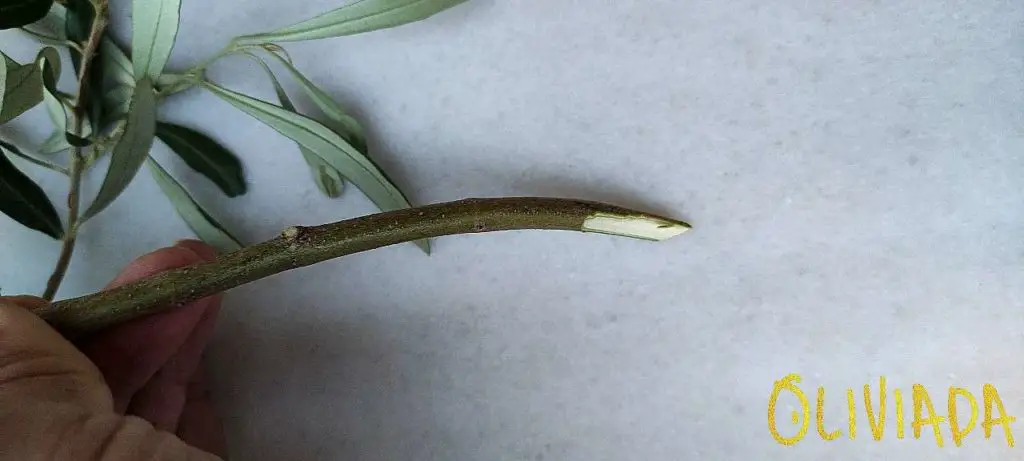
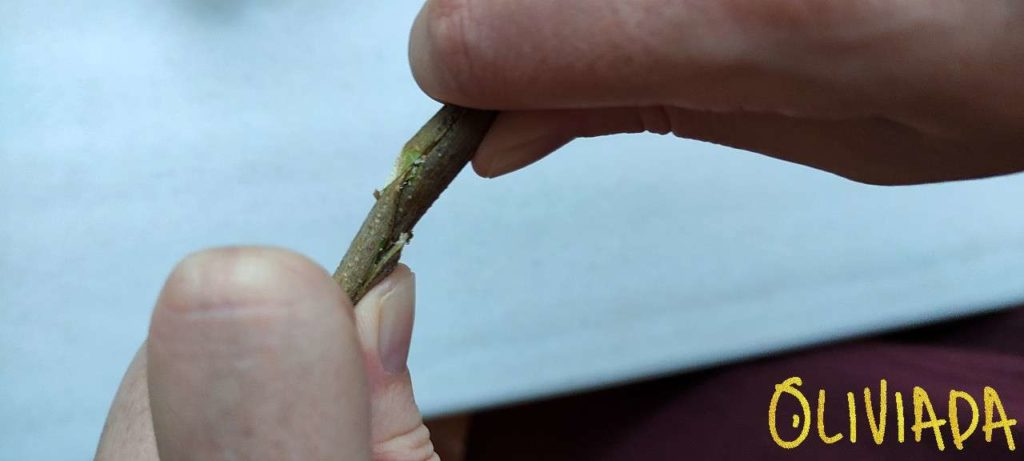
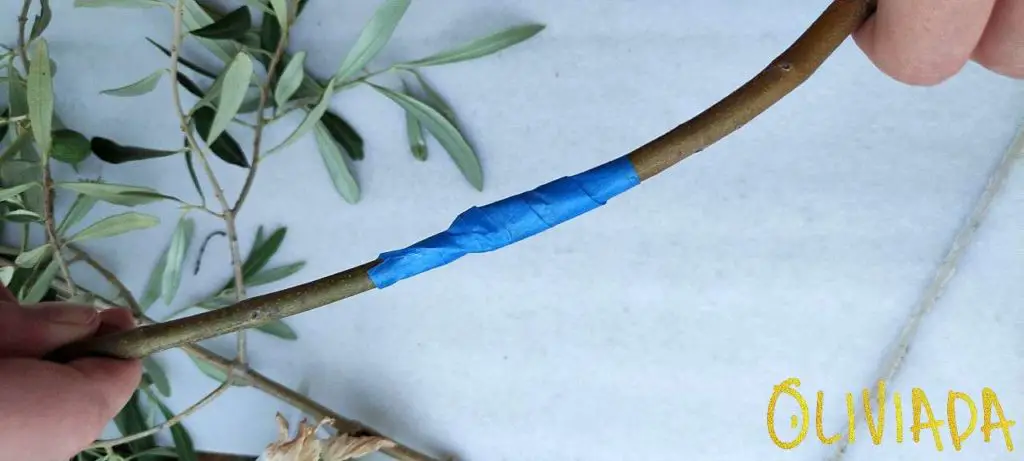
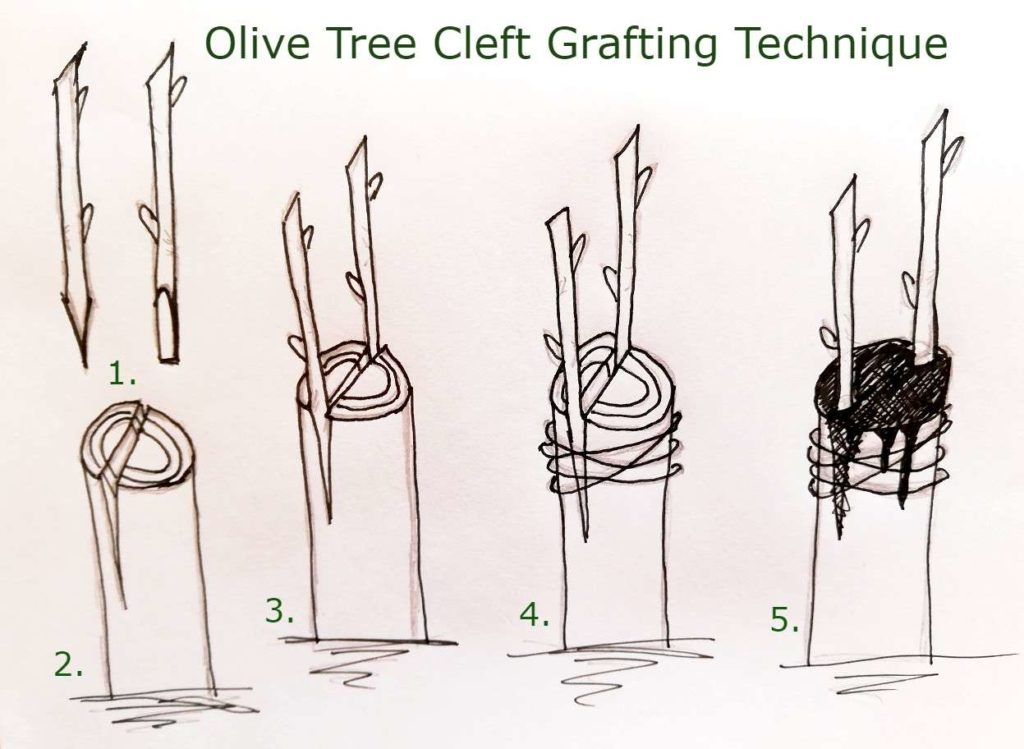
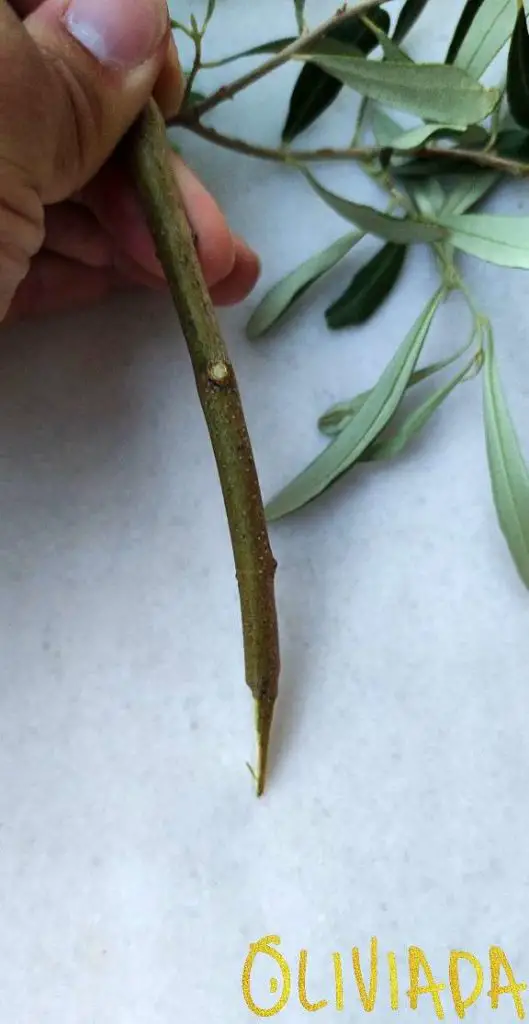
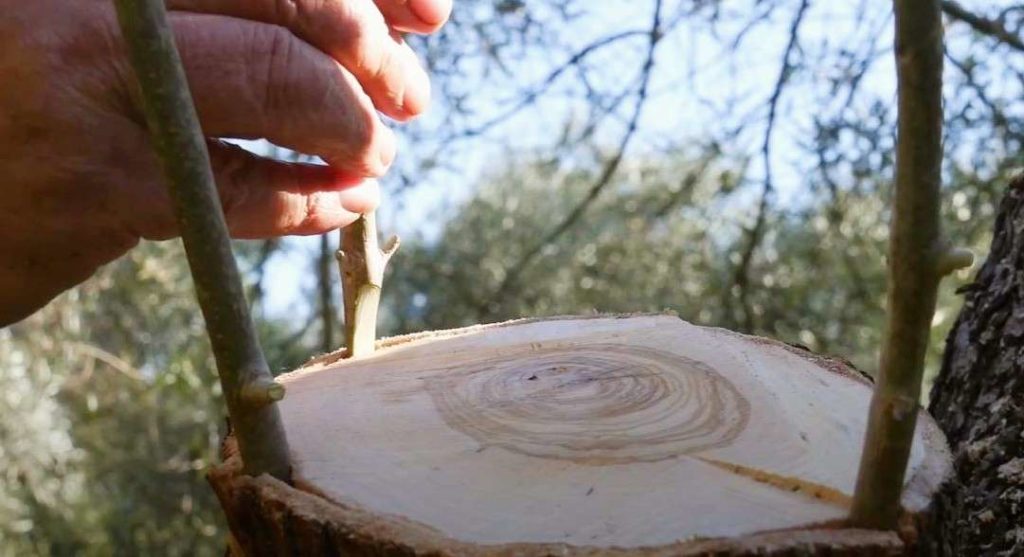
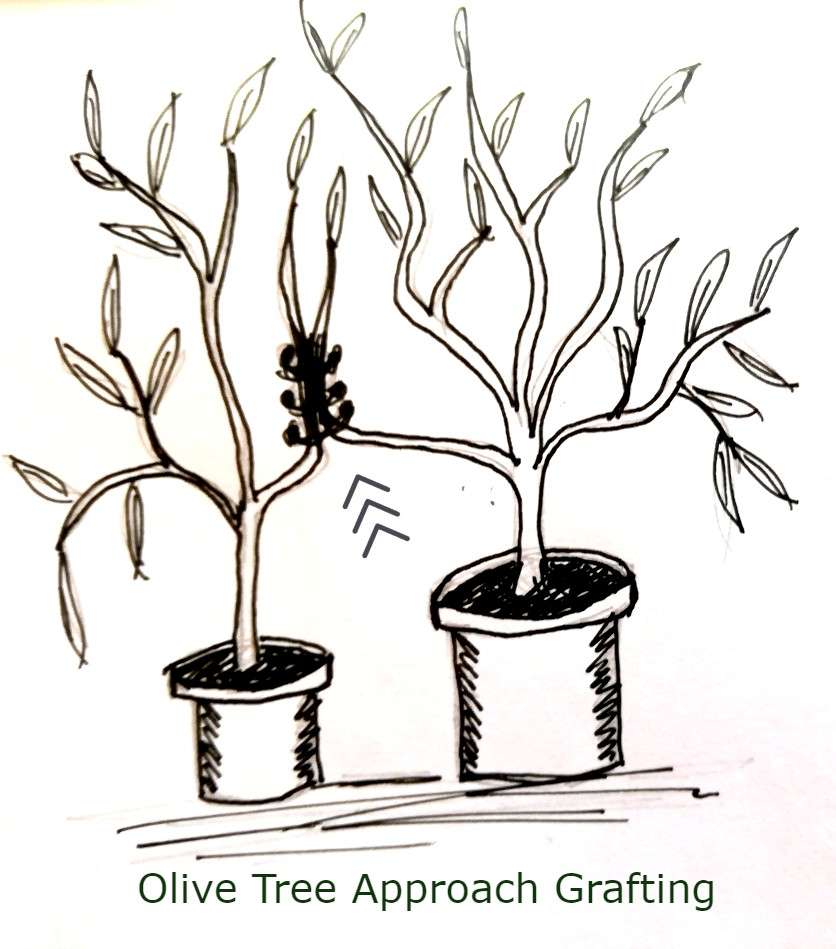
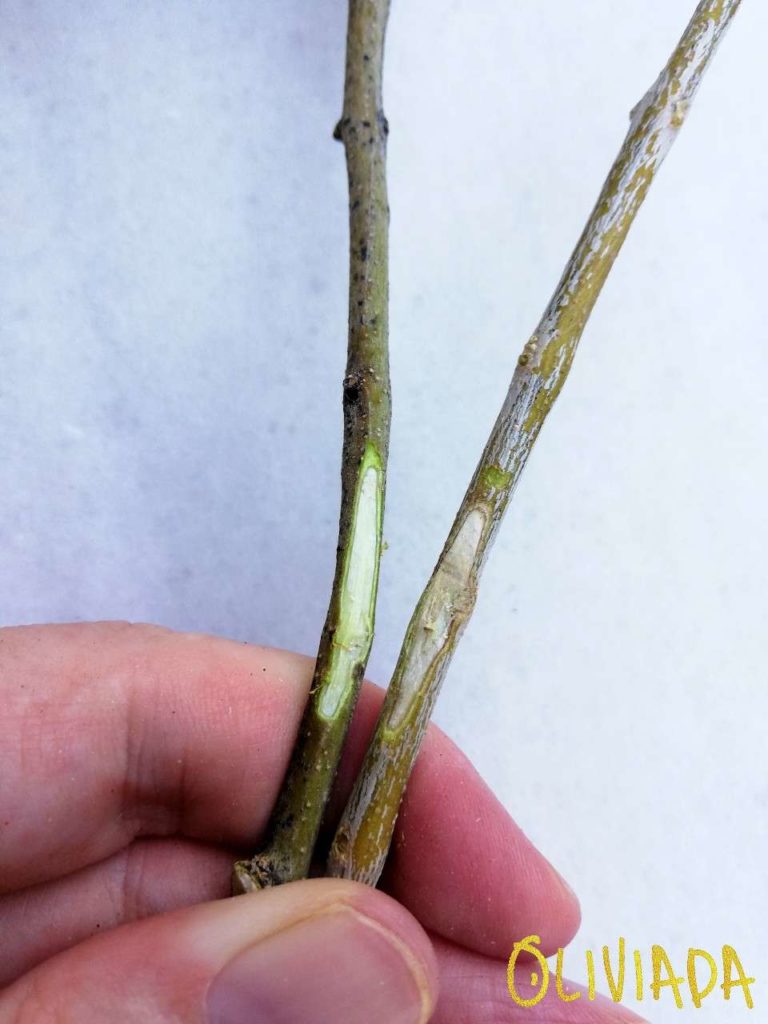
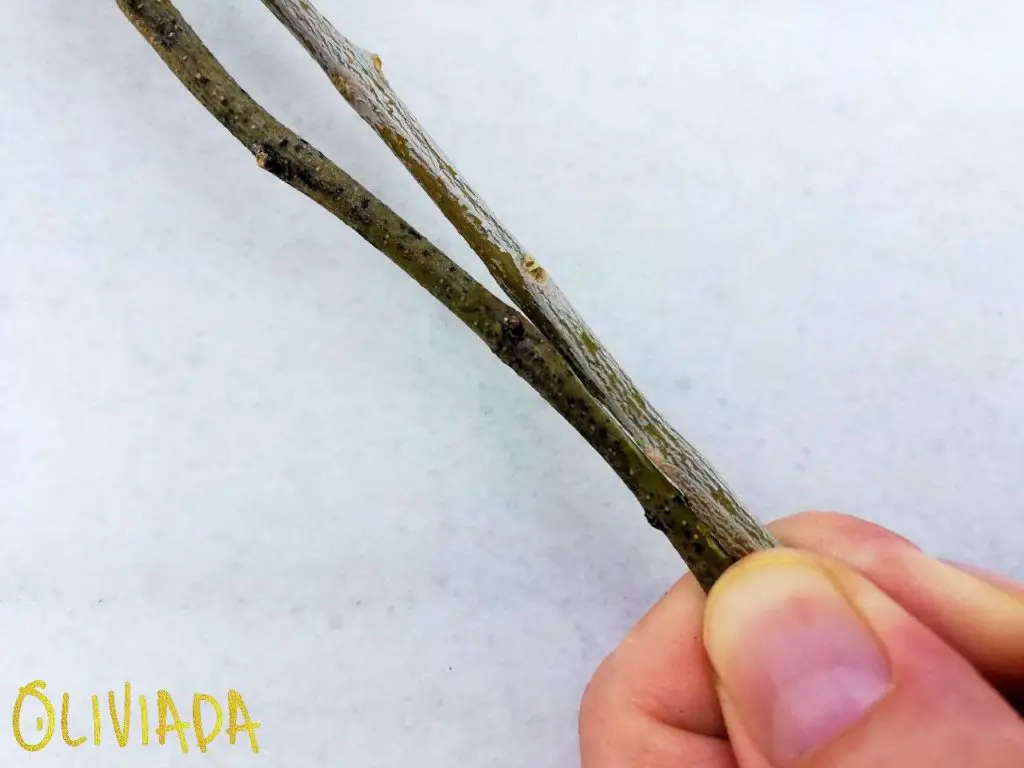

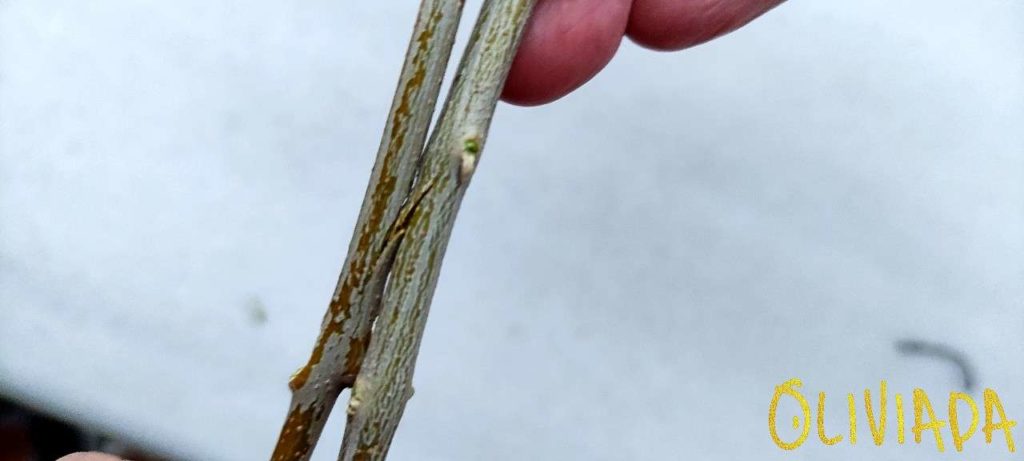
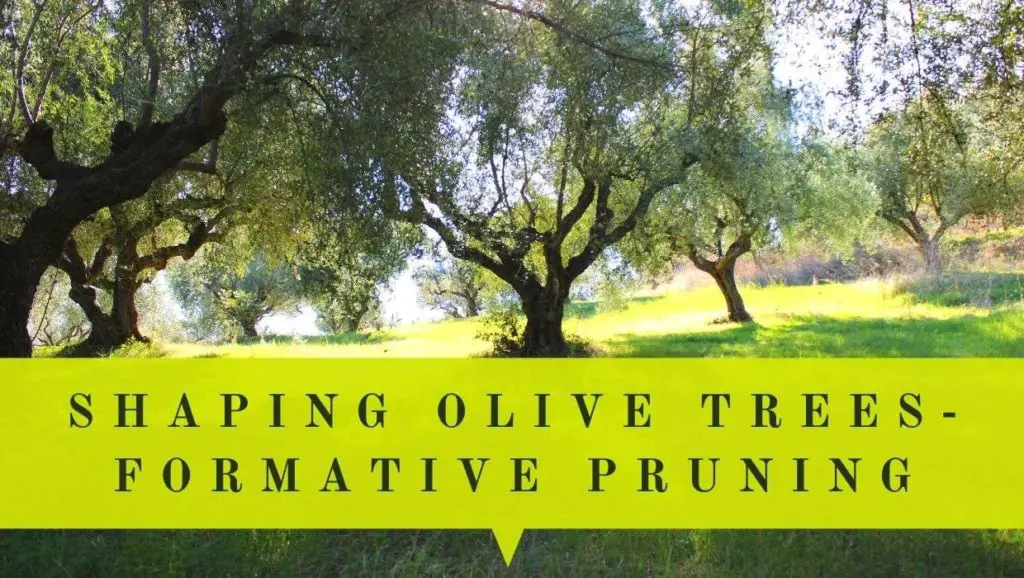
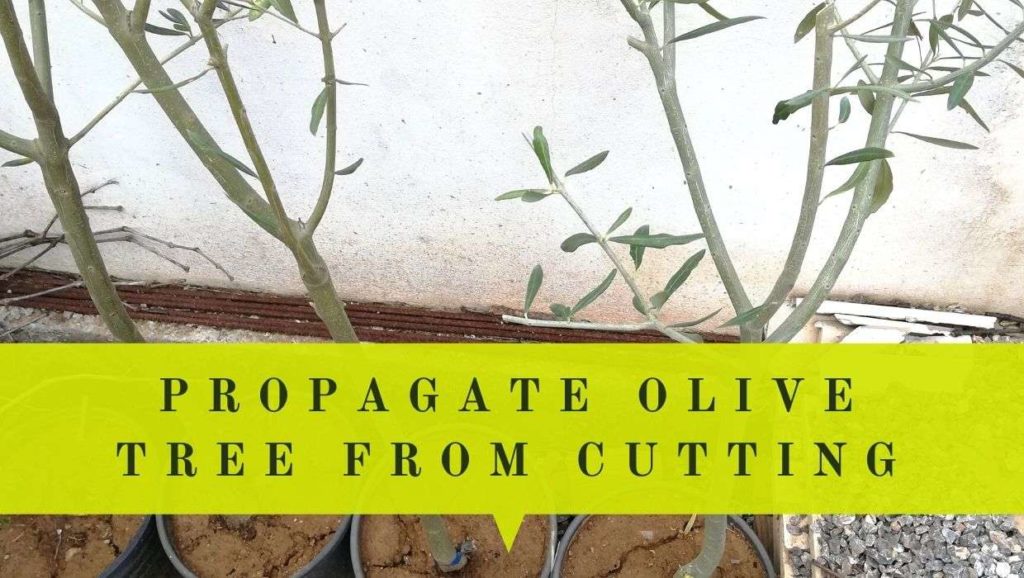
Thanks Vangelis, I found this article very useful to understand how olive tree grafting is done. I’m not a farmer and won’t last too long in a garden :) so I respect your expertise here. Just curious to understand how grafting takes place. All the best.
Hi Antony! Glad you liked my article and hope you will try one of these grafting techniques one day :)
Have you ever considered interspecies grafts?
https://penelope.uchicago.edu/Thayer/E/Journals/TAPA/64/Ancient_Grafting*.html#note39
Also, if I want to take a scion from a distant tree – how to I transport it?
Any hello would be much appreciated
Hi Thrawn, no, we never tried interspecies grafts with olive trees since our ultimate goal is to increase the size of olive fruit and yield. However, by following my article you can try to graft olives with different species – it would b eintreesting to know how it goes!
Thrawn, the most important not to let your scion dry until it is grafted. You can wrap it into moist paper or napkin and place it into a plastic bag or you can let it sit into a bucket of water while transporting.
Can you expect to have Olives sooner if you are top grafting over mature trees? Grafting onto limbs from 2-4 inches in diameter? Is splitting these main limbs in the center with a chisel all the way across better than make the vertical side cuts? Is splitting with an axe better than using a hacksaw? You mention glue instead of grafting wax. Would outdoor waterproof rubber glue work to fill in split on mature tree top grafting.? Craig Battuello
[email protected]
Battuellovineyards.com
My Grandfather came to the U.S. from Italy at age 22, in 1906. From Favria, Northern Italy.
Hi Craig, definitely grafting onto the rootstock of a mature olive tree that is already established allows trees to bear olive fruits earlier. The idea of a vertical side cut is to ensure good contact of the outer cambium layers of both grafting parts, but you can experiment and split 2-4 in limbs in the center making sure they have a perfect fit with each other. Bear in mind there are many grafting techniques and I have chosen the most widely practiced for olive trees. In my opinion, the best is to use a hammer and chisel when splitting olive wood, an axe can make a too deep cut, there as a hacksaw is not really suitable for this job. I am not sure if rubber glue would work for wood, but as a substitute for wood glue or grafting wax, you can use grafting tape, masking tape, paints or even mud.
Hi there !
I have a question about grafting. Is it possible to engraft a wild olive-
branch into a cultivated olive -tree? Sombody told me you can and
eventually the wild branch will produce olive-fruit with the same quality as the ‘mother-tree’ /original-tree. I have heard that wild olives are not edible but they will be after engrafting into the cultivated tree (?)
Greetings from Thomas Engberg , Örebro , Sweden
Hi Thomas, absolutely yes, you can engraft a wild olive tree branch into an already cultivated olive tree. In that case, after successful grafting, you will get “wild olive” fruits on the grafted branches. Though the fruit production may increase and fruits may become slightly larger depending on the rootstock variety and how those 2 trees match. Wild olives are small in size, but edible when prepared and cured. Hope it helps
Thank you for the lovely article.
I have a question about grafting olives that fruit in alternating years. If I graft scions from a tree that fruits in the even numbered years onto a rootstock that fruits in the odd numbered years, will I achieve every-year-production from the alternate ‘sides’ of the tree after the graft has taken and matured?
Right now, my trees are effectively non-fruiting in alternate years and I would like to find a way to gain more production without planting more trees and taking up more farmland.
Thanks for your thoughts.
Hi Michael, such a good question! Indeed, you will achieve every-year-production since graft scions will bring their “genes” and “know-how” and follow their fruiting cycles. Also, you can use mechanical pollination on your olive trees with pollen taken from other olive varieties and see how it goes. Sometimes it is worth trying many different options in order to find a way how it works best.
I am new to grafting, I have a 2year old olive tree about 8 feet high. it has all the branches at the 4 top, I am in Florida and my screen Lanie is 8-10 feet high. The main root is 3/4 to 1 inch in diameter, My question is can I cut a 2foot section out of the main root and graft the top to the bottom,
Thanks for any information,
Phil Albanese
Hi Phil, if I understood correctly you are asking if root grafting is possible for olive trees. Yes, it is possible but more difficult due to the following reasons: the scion may take the root because the base of the scion at the graft union will be underground. Normally, when you plant olive tree, the graft union is well clear of the ground. Another thing, the tape used to seal the graft union must be cut once the graft has healed and it is more difficult than usual since it’s underground. Anyway, it is always worth trying and seeing it as tree growing adventure! :)
When is the best time to grafting in the Mediterranean region. (Malta) Many thanks.
Hi, For Mediterranean climates like Malta, the best time for grafting is generally late winter to early spring, just as the tree is beginning to emerge from its dormancy but before the new growth of spring truly starts. This usually falls in the range of February to March.